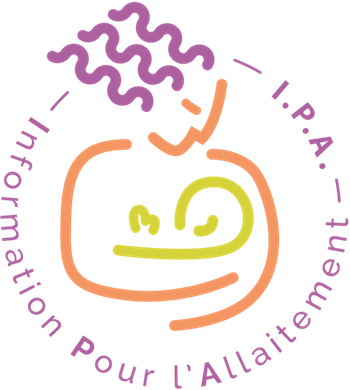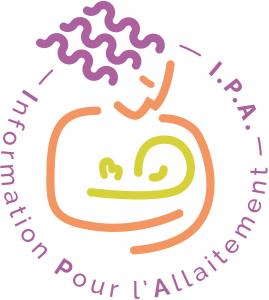Catégories
 > Physiologie > Physiologie nutrition > Composition du lait > Composition du lait maternel > Physiologie > Physiologie nutrition > Composition du lait > Composition du lait maternel
Composition du lait maternel |
Documents disponibles dans cette catégorie (192)
Ajouter le résultat dans votre panier Faire une suggestion Affiner la recherche
Article : texte imprimé
Article : texte imprimé
Lynn S. Chollet-Hinton, Auteur ; Alison M. Stuebe, Auteur ; Patricia Casbas-Hernandez, Auteur |A longer lifetime duration of breastfeeding may decrease the risk of breast cancer by reducing breast inflammation and mitigating inflammatory cytokine expression during postlactational involution. However, little is known about how the inflamma[...]texte imprimé
Thomas W. Hale, Éditeur scientifique ; Peter E. Hartmann, Éditeur scientifique | Hale Publishing | 2007Written by many of the world's leading experts, this first edition of Textbook of Human lactation adresses the most curret evidence-based scientific knowledge in this rapidly developing field. While there are many clinical guides availables, thi[...]Article : texte imprimé
Aaron A. Reeves, Auteur ; Marney C. Johnson, Auteur ; Margarita M. Vasquez, Auteur |Objective: This study compared cytokines (in particular transforming growth factor [TGF]-β2) and lactoferrin in maternal human milk (MHM), human-derived milk fortifier (HDMF), and donor human milk (DHM). Materials and Methods: MHM was ra[...]Article : texte imprimé
Hope K. Lima, Auteur ; Kenneth Vogel, Auteur |Background During pumping, storage, and pasteurization human milk is exposed to light, which could affect the concentrations of light-sensitive vitamins. Currently, milk banks do not regulate light exposure. Research Aim The aim of this pap[...]Article : texte imprimé
Gretchen Bandoli, Auteur ; Kerri Bertrand, Auteur ; Maryana Saoor, Auteur ; Christina D. Chambers, Auteur |Introduction: Human milk is the normative standard for infant/toddler nutrition. To better understand human milk's imprinting on health, and inform complex decisions about maternal medication, substance use, and other exposures during lactation,[...]Article : texte imprimé
Mariela Valentina Cortez, Auteur ; Elio Andrés Soria, Auteur |Objectives: Human milk banks need to extend the suitability of milk for breastfeeding, and for this technological advances are required. Our aim was to establish the capacity of freeze-drying to conserve milk properties without further oxidative[...]Article : texte imprimé
Chiara Peila, Auteur ; Alessandra Coscia, Auteur ; Enrico Bertino, Auteur |Introduction: There is evidence that mother's own milk is the best nutrient in terms of multiorgan protection and infection prevention. However, when maternal milk is scarce, the solution can be represented by donor milk (DM), which requires spe[...]Article : texte imprimé
Laurence Mangel, Auteur ; Sharon Morag, Auteur ; Dror Mandel, Auteur ; Ronella Marom, Auteur ; Hadar Moran-Lev, Auteur ; Ronit Lubetzky, Auteur |Background: Sex differences in infant mortality and neonatal morbidity have been previously documented. Few studies, with conflicting results, have investigated the interaction between human milk (HM) macronutrients and energy content and infant[...]Article : texte imprimé
Moria Be'er, Auteur ; Dror Mandel, Auteur ; Alexander Yelak, Auteur ; Laurence Mangel, Auteur ; Ronit Lubetzky, Auteur |Objective: There are multiple health benefits associated with both breastfeeding and practicing physical activity (PA). Therefore, it is likely that many women might want to engage in both. We designed the current randomized clinical trial to ex[...]Article : texte imprimé
Fang-Yuan Chang, Auteur ; Li-Jung Fang, Auteur ; Chao-Sheng Chang, Auteur ; Tsung-Zu Wu, Auteur |Background: The pasteurization is a mandatory step to inactivate pathogenic microorganisms of bank milk. For storage, freezing and thawing are necessary. The concentration of macronutrients and energy of bank milk could be influenced by these pr[...]Article : texte imprimé
Dror Mandel, Auteur ; Françis B. Mimouni, Auteur |Expressed Breast Milk (EBM) is increasingly used throughout the developed world. In 2013, it was estimated that ∼25% of mothers in the United States express regularly their milk, and close to 40% do it occasionally, whereas most of the 6 m[...]Article : texte imprimé
Anastasia Mantziari, Auteur ; Juhani Aakko, Auteur ; Himanshu Kumar, Auteur ; Satu Tölkkö, Auteur ; Elloise Du Toit, Auteur ; Seppo Salminen, Auteur ; Erika Isolauri, Auteur ; Samuli Rautava, Auteur |Human milk is the optimal source of complete nutrition for neonates and it also guides the development of infant gut microbiota. Importantly, human milk can be supplemented with probiotics to complement the health benefits of breastfeeding. Stor[...]Article : texte imprimé
This article reminds one of the relationships of maternal diet and docosahexaenoic acid (DHA) concentrations in breast milk. Dietary essential fatty acids (EFAs), such as C18 linolenic and C18 linoleic acid, normally undergo an endogenous enzyma[...]Article : texte imprimé
Hannah G. Juncker, Auteur ; Sien J. Mulleners, Auteur ; Marit J. van Gils, Auteur |Background Severe acute respiratory syndrome coronavirus 2 (SARS-CoV-2) vaccines are being administered around the world; however, lactating women were excluded from SARS-CoV-2 vaccine trials. Therefore, knowledge about the effect of vaccinatio[...]Nouveauté


















